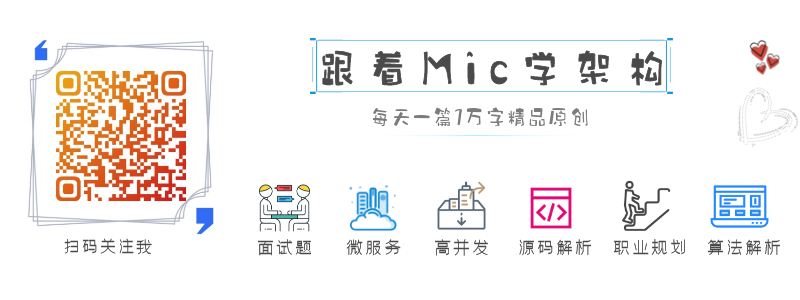你真的知道Spring注解驱动的前世今生吗?这篇文章让你豁然开朗!

本篇文章,从Spring1.x到Spring 5.x的迭代中,站在现在的角度去思考Spring注解驱动的发展过程,这将有助于我们更好的理解Spring中的注解设计。
Spring Framework 1.x
在SpringFramework1.x时代,其中在1.2.0是这个时代的分水岭,当时Java5刚刚发布,业界正兴起了使用Annotation的技术风,Spring Framework自然也提供了支持,比如当时已经支持了@Transactional等注解,但是这个时候,XML配置方式还是唯一选择。
在xml中添加Bean的声明
<bean name="testService" class="com.gupaoedu.controller.TestService"/>
测试
public class XmlMain {
public static void main(String[] args) {
ApplicationContext context=new FileSystemXmlApplicationContext("classpath:applicationContext.xml");
TestService testService=(TestService)context.getBean("testService");
System.out.println(testService);
}
}
Spring Framework 2.x
Spring Framework2.x时代,2.0版本在Annotation中添加了@Required、@Repository以及AOP相关的@Aspect等注解,同时也提升了XML配置能力,也就是可扩展的XML,比如Dubbo这样的开源框架就是基于Spring XML的扩展来完美的集成Spring,从而降低了Dubbo使用的门槛。
在2.x时代,2.5版本也是这个时代的分水岭, 它引入了一些很核心的Annotation
- Autowired 依赖注入
- @Qualifier 依赖查找
- @Component、@Service 组件声明
- @Controller、@RequestMappring等spring mvc的注解
尽管Spring 2.x时代提供了不少的注解,但是仍然没有脱离XML配置驱动,比如context:annotation-config context:componet-scan , 前者的职责是注册Annotation处理器,后者是负责扫描classpath下指定包路径下被Spring模式注解标注的类,将他们注册成为Spring Bean
在applicationContext.xml中定义context:componet-scan
<context:component-scan base-package="com.gupaoedu.controller"/>
添加注解声明
@Service
public class TestService {
}
测试类
public class XmlMain {
public static void main(String[] args) {
ApplicationContext context=new FileSystemXmlApplicationContext("classpath:applicationContext.xml");
TestService testService=(TestService)context.getBean("testService");
System.out.println(testService);
}
}
Spring Framework 3.x
Spring Framework3.0是一个里程碑式的时代,他的功能特性开始出现了非常大的扩展,比如全面拥抱Java5、以及Spring Annotation。更重要的是,它提供了配置类注解@Configuration, 他出现的首要任务就是取代XML配置方式,不过比较遗憾的是,Spring Framework3.0还没有引入替换XML元素context:componet-scan的注解,而是选择了一个过渡方式@ImportResource。
@ImportResource允许导入遗留的XML配置文件,比如
@ImportResource("classpath:/META-INF/spring/other.xml")
@Configuration
public class SpringConfiguration{
}
并且在Spring Frameworkd提供了AnnotationConfigApplicationContext注册,用来注册@Configuration Class,通过解析Configuration类来进行装配。
在3.1版本中,引入了@ComponentScan,替换了XML元素Context:component-scan , 这个注解虽然是一个小的升级,但是对于spring 来说在注解驱动领域却是一个很大的进步,至此也体现了Spring 的无配置化支持。
Configuration配置演示
Configuration这个注解大家应该有用过,它是JavaConfig形式的基于Spring IOC容器的配置类使用的一种注解。因为SpringBoot本质上就是一个spring应用,所以通过这个注解来加载IOC容器的配置是很正常的。所以在启动类里面标注了@Configuration,意味着它其实也是一个IoC容器的配置类。
举个非常简单的例子
测试代码
ConfigurationDemo
@Configuration
public class ConfigurationDemo {
@Bean
public DemoClass demoClass(){
return new DemoClass();
}
}
DemoClass
public class DemoClass { public void say(){
System.out.println("say: Hello Mic");
}
}
ConfigurationMain
public class ConfigurationMain { public static void main(String[] args) {
ApplicationContext applicationContext=
new AnnotationConfigApplicationContext
(ConfigurationDemo.class);
DemoClass demoClass=applicationContext.getBean(DemoClass.class);
demoClass.say();
}
}
Component-scan
ComponentScan这个注解是大家接触得最多的了,相当于xml配置文件中的context:component-scan。 它的主要作用就是扫描指定路径下的标识了需要装配的类,自动装配到spring的Ioc容器中。
标识需要装配的类的形式主要是:@Component、@Repository、@Service、@Controller这类的注解标识的类。
在spring-mvc这个工程中,创建一个单独的包路径,并创建一个OtherServcie。
@Service
public class OtherService {
}
在Controller中,注入OtherService的实例,这个时候访问这个接口,会报错,提示没有otherService这个实例。
@RestController
public class HelloController { @Autowired
OtherService otherService; @GetMapping("/hello")
public String hello(){
System.out.println(otherService);
return "Hello Gupaoedu";
}
}
添加conpoment-scan注解,再次访问,错误解决。
@ComponentScan("com.gupaoedu")
ComponentScan默认会扫描当前package下的的所有加了相关注解标识的类到IoC容器中;
Import注解
import注解是什么意思呢? 联想到xml形式下有一个<import resource/> 形式的注解,就明白它的作用了。import就是把多个分来的容器配置合并在一个配置中。在JavaConfig中所表达的意义是一样的。
创建一个包,并在里面添加一个单独的configuration
public class DefaultBean {
}
@Configuration
public class SpringConfig { @Bean
public DefaultBean defaultBean(){
return new DefaultBean();
}
}
此时运行测试方法,
public class MainDemo { public static void main(String[] args) {
ApplicationContext ac=new AnnotationConfigApplicationContext(SpringConfig.class);
String[] defNames=ac.getBeanDefinitionNames();
for(String name:defNames){
System.out.println(name);
}
}
}
在另外一个包路径下在创建一个配置类。此时再次运行前面的测试方法,打印OtherBean实例时,这个时候会报错,提示没有该实例
public class OtherBean {
}
@Configuration
public class OtherConfig { @Bean
public OtherBean otherBean(){
return new OtherBean();
}
}
修改springConfig,把另外一个配置导入过来
@Import(OtherConfig.class)
@Configuration
public class SpringConfig { @Bean
public DefaultBean defaultBean(){
return new DefaultBean();
}
}
再次运行测试方法,即可看到对象实例的输出。
至此,我们已经了解了Spring Framework在注解驱动时代,完全替代XML的解决方案。至此,Spring团队就此止步了吗?你们太单纯了。虽然无配置化能够减少配置的维护带来的困扰,但是,还是会存在很对第三方组建的基础配置声明。同样很繁琐,所以Spring 退出了@Enable模块驱动。这个特性的作用是把相同职责的功能组件以模块化的方式来装配,更进一步简化了Spring Bean的配置。
Enable模块驱动
我们通过spring提供的定时任务机制来实现一个定时任务的功能,分别拿演示在使用Enable注解和没使用Enable的区别。让大家感受一些Enable注解的作用。
使用EnableScheduing之前
在applicationContext.xml中添加定时调度的配置
<?xml version="1.0" encoding="UTF-8"?>
<beans xmlns="http://www.springframework.org/schema/beans"
xmlns:xsi="http://www.w3.org/2001/XMLSchema-instance"
xmlns:task="http://www.springframework.org/schema/task"
xmlns:context="http://www.springframework.org/schema/context"
xsi:schemaLocation="http://www.springframework.org/schema/beans
http://www.springframework.org/schema/beans/spring-beans-3.2.xsd
http://www.springframework.org/schema/task
http://www.springframework.org/schema/task/spring-task-3.2.xsd http://www.springframework.org/schema/context https://www.springframework.org/schema/context/spring-context.xsd"> <context:component-scan base-package="com.gupaoedu.controller"/>
<!--AnnotationDrivenBeanDefinitionParser-->
<task:annotation-driven scheduler="scheduler"/> <!-- 定时器开关-->
<task:scheduler id="scheduler" pool-size="5"/>
</beans>
编写任务处理类
@Service
public class TaskService { @Scheduled(fixedRate = 5000) //通过@Scheduled声明该方法是计划任务,使用fixedRate属性每隔固定时间执行
public void reportCurrentTime(){
System.out.println("每隔5秒执行一次 "+new Date());
}
}
编写测试类
public class TestTask { public static void main(String[] args) {
ApplicationContext applicationContext=new FileSystemXmlApplicationContext("classpath:applicationContext.xml"); }
}
使用EnableScheding之后
创建一个配置类
@Configuration
@ComponentScan("com.gupaoedu.controller")
@EnableScheduling
public class SpringConfig {
}
创建一个service
@Service
public class TaskService {
@Scheduled(fixedRate = 5000) //通过@Scheduled声明该方法是计划任务,使用fixedRate属性每隔固定时间执行
public void reportCurrentTime(){
System.out.println("每隔5秒执行一次 "+new Date());
}
}
创建一个main方法
public class TaskMain {
public static void main(String[] args) {
ApplicationContext context=new AnnotationConfigApplicationContext(SpringConfig.class);
}
}
启动服务即可实现定时调度的功能。
思考使用Enable省略了哪个步骤呢?
首先我们看没使用Enable的代码,它里面会有一个
<task:annotation-driven scheduler="scheduler"/>
这个scheduler是一个注解驱动,会被AnnotationDrivenBeanDefinitionParser 这个解析器进行解析。
在parse方法中,会有如下代码的定义
builder = BeanDefinitionBuilder.genericBeanDefinition("org.springframework.scheduling.annotation.ScheduledAnnotationBeanPostProcessor");
builder.getRawBeanDefinition().setSource(source);
这个类是用来解析@Scheduled注解的。
ok,我们再看一下EnableScheduling注解,我们可以看到,它会自动注册一个ScheduledAnnotationBeanPostProcessor的bean。所以,通过这个例子,就是想表达Enable注解的作用,它可以帮我们省略一些第三方模块的bean的声明的配置。
public class SchedulingConfiguration {
public SchedulingConfiguration() {
}
@Bean(
name = {"org.springframework.context.annotation.internalScheduledAnnotationProcessor"}
)
@Role(2)
public ScheduledAnnotationBeanPostProcessor scheduledAnnotationProcessor() {
return new ScheduledAnnotationBeanPostProcessor();
}
}
Spring Framework 4.x
Spring 4.x版本,是注解的完善时代,它主要是提升条件装配能力,引入了@Conditional注解,通过自定义Condition实现配合,弥补了之前版本条件化配置的短板。
简单来说,Conditional提供了一个Bean的装载条件判断,也就是说如果这个条件不满足,那么通过@Bean声明的对象,不会被自动装载进来,具体是怎么用的呢?,先来简单带大家了解一下它的基本使用。
Conditional的概述
@Conditional是一个注解,我们观察一下这个注解的声明, 它可以接收一个Condition的数组。
@Target({ElementType.TYPE, ElementType.METHOD})
@Retention(RetentionPolicy.RUNTIME)
@Documented
public @interface Conditional {
Class<? extends Condition>[] value();
}
@FunctionalInterface
public interface Condition {
boolean matches(ConditionContext var1, AnnotatedTypeMetadata var2);
}
这个Condition是一个函数式接口,提供了一个matchers的方法,简单来说,它就是提供了一个匹配的判断规则,返回true表示可以注入bean,返回false表示不能注入。
Conditional的实战
自定义个一个Condition,逻辑比较简单,如果当前操作系统是Windows,则返回true,否则返回false
public class GpCondition implements Condition{
@Override
public boolean matches(ConditionContext conditionContext, AnnotatedTypeMetadata
annotatedTypeMetadata) {
//此处进行条件判断,如果返回 true,表示需要加载该配置类或者 Bean
//否则,表示不加载
String os=conditionContext.getEnvironment().getProperty("os.name");
if(os.contains("Windows")){
return true;
}
return false;
}
}
创建一个配置类,装载一个 BeanClass
@Configuration
public class ConditionConfig {
@Bean
@Conditional(GpCondition.class)
public BeanClass beanClass(){
return new BeanClass();
}
}
在 BeanClass 的 bean 声明方法中增加@Conditional(GpCondition.class),其中具体的条件是我们自定义的 GpCondition 类。上述代码所表达的意思是,如果 GpCondition 类中的 matchs 返回 true,则将 BeanClass 装载到 Spring IoC 容器中
运行测试方法
public class ConditionMain {
public static void main(String[] args) {
AnnotationConfigApplicationContext context=new
AnnotationConfigApplicationContext(ConditionConfig.class);
BeanClass beanClass=context.getBean(BeanClass.class);
System.out.println(beanClass);
}
}
总结
经过对Spring注解驱动的整体分析,不难发现,我们如今之所以能够非常方便的基于注解来完成Spring中大量的功能,得益于Spring团队不断解决用户痛点而做的各种努力。
而Spring Boot的自动装配机制,也是在Spring 注解驱动的基础上演化而来,在后续的内容中,我会专门分析Spring Boot的自动装配机制。
版权声明:本博客所有文章除特别声明外,均采用 CC BY-NC-SA 4.0 许可协议。转载请注明来自
Mic带你学架构!
如果本篇文章对您有帮助,还请帮忙点个关注和赞,您的坚持是我不断创作的动力。欢迎关注「跟着Mic学架构」公众号公众号获取更多技术干货!

你真的知道Spring注解驱动的前世今生吗?这篇文章让你豁然开朗!的更多相关文章
- Spring注解驱动开发之Ioc容器篇
前言:现今SpringBoot.SpringCloud技术非常火热,作为Spring之上的框架,他们大量使用到了Spring的一些底层注解.原理,比如@Conditional.@Import.@Ena ...
- 【Spring注解驱动开发】二狗子让我给他讲讲@EnableAspectJAutoProxy注解
写在前面 最近,二狗子入职了新公司,新入职的那几天确实有点飘.不过慢慢的,他发现他身边的人各个身怀绝技啊,有Spring源码的贡献者,有Dubbo源码的贡献者,有MyBatis源码的贡献者,还有研究A ...
- 【Spring注解驱动开发】使用InitializingBean和DisposableBean来管理bean的生命周期,你真的了解吗?
写在前面 在<[Spring注解驱动开发]如何使用@Bean注解指定初始化和销毁的方法?看这一篇就够了!!>一文中,我们讲述了如何使用@Bean注解来指定bean初始化和销毁的方法.具体的 ...
- Spring 注解驱动(一)基本使用规则
Spring 注解驱动(一)基本使用规则 Spring 系列目录(https://www.cnblogs.com/binarylei/p/10198698.html) 一.基本使用 @Configur ...
- Spring 注解驱动(二)Servlet 3.0 注解驱动在 Spring MVC 中的应用
Spring 注解驱动(二)Servlet 3.0 注解驱动在 Spring MVC 中的应用 Spring 系列目录(https://www.cnblogs.com/binarylei/p/1019 ...
- 1、课程简介-Spring 注解驱动开发
1.课程简介-Spring 注解驱动开发
- 0、Spring 注解驱动开发
0.Spring注解驱动开发 0.1 简介 <Spring注解驱动开发>是一套帮助我们深入了解Spring原理机制的教程: 现今SpringBoot.SpringCloud技术非常火热,作 ...
- 【Spring注解驱动开发】聊聊Spring注解驱动开发那些事儿!
写在前面 今天,面了一个工作5年的小伙伴,面试结果不理想啊!也不是我说,工作5年了,问多线程的知识:就只知道继承Thread类和实现Runnable接口!问Java集合,竟然说HashMap是线程安全 ...
- 【Spring注解驱动开发】组件注册-@ComponentScan-自动扫描组件&指定扫描规则
写在前面 在实际项目中,我们更多的是使用Spring的包扫描功能对项目中的包进行扫描,凡是在指定的包或子包中的类上标注了@Repository.@Service.@Controller.@Compon ...
随机推荐
- DL4J实战之四:经典卷积实例(GPU版本)
欢迎访问我的GitHub https://github.com/zq2599/blog_demos 内容:所有原创文章分类汇总及配套源码,涉及Java.Docker.Kubernetes.DevOPS ...
- C++ 与 Visual Studio 2019 和 WSL(四)——库组件
C++ 与 Visual Studio 2019 和 WSL (库组件) Reference 在 C++ 项目中使用库和组件 | Microsoft Docs 演练:创建和使用自己的动态链接库 (C+ ...
- 个人记录:对于python学习的反思和总结(一)
在写代码时,总是遇到写着写着不知道怎么写了的情况,或者无法把自己的想法用程序表达出来,所以有时候我们需要建立一个自己的编程思路,对一个具体程序的编程有一个比较清晰的想法:因此我把自己的思路总结了一下, ...
- MacOS安装使用Kettle
一.环境说明 操作系统版本:macOS Big Sur 11.6.1 机型:Intel版本 JDK版本:Amazon Corretto-openjdk8 Kettle版本:Kettle8.9 二.问题 ...
- [对对子队]会议记录5.16(Scrum Meeting3)
今天已完成的工作 何瑞 工作内容:搭建关卡5.6,优化之前的成本系统 相关issue:搭建关卡4.5.6 相关签入:feat: 第五第六关搭建完成 吴昭邦 工作内容:搭建关卡5.6 ...
- 【二食堂】Alpha - Scrum Meeting 11
Scrum Meeting 11 例会时间:4.21 18:00~18:20 进度情况 组员 进度 今日任务 李健 1. 登录注册页面前后端对接issue 1. 登录注册页面前后端对接issue2. ...
- Spark面试题(二)
首发于我的个人博客:Spark面试题(二) 1.Spark有哪两种算子? Transformation(转化)算子和Action(执行)算子. 2.Spark有哪些聚合类的算子,我们应该尽量避免什么类 ...
- 因为一个小小的Integer问题导致阿里一面没过,遗憾!
面试题:new Integer(112)和Integer.valueOf(112)的区别 面试官考察点猜想 这道题,考察的是对Integer这个对象原理的理解,关于这道题的变体有很多,我们会一一进行分 ...
- 二进制小数 牛客网 程序员面试金典 C++ Python
二进制小数 牛客网 程序员面试金典 题目描述 有一个介于0和1之间的实数,类型为double,返回它的二进制表示.如果该数字无法精确地用32位以内的二进制表示,返回"Error". ...
- 第K个数 牛客网 程序员面试金典 C++ Python
第K个数 牛客网 程序员面试金典 C++ Python 题目描述 有一些数的素因子只有3.5.7,请设计一个算法,找出其中的第k个数. 给定一个数int k,请返回第k个数.保证k小于等于100. 测 ...
